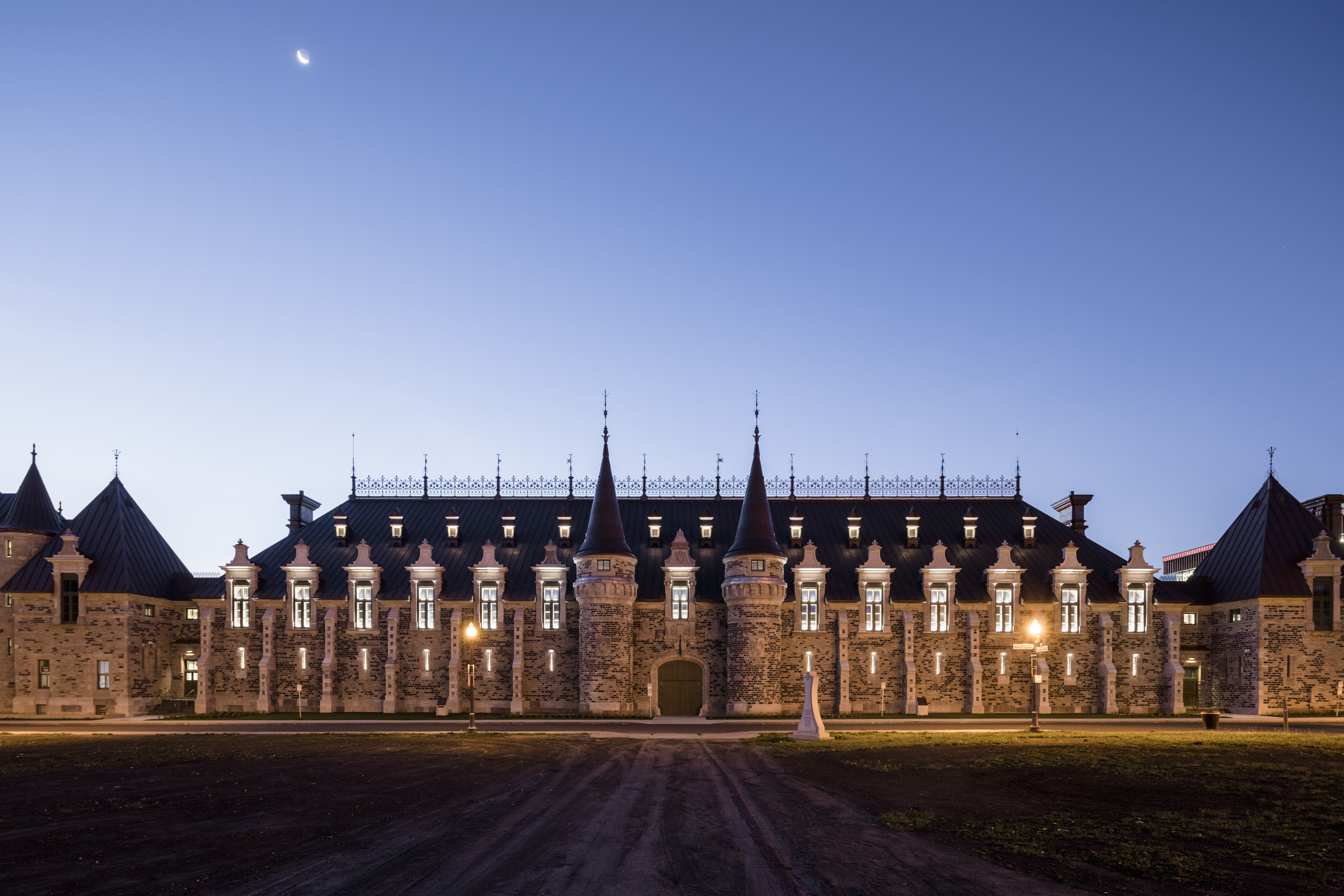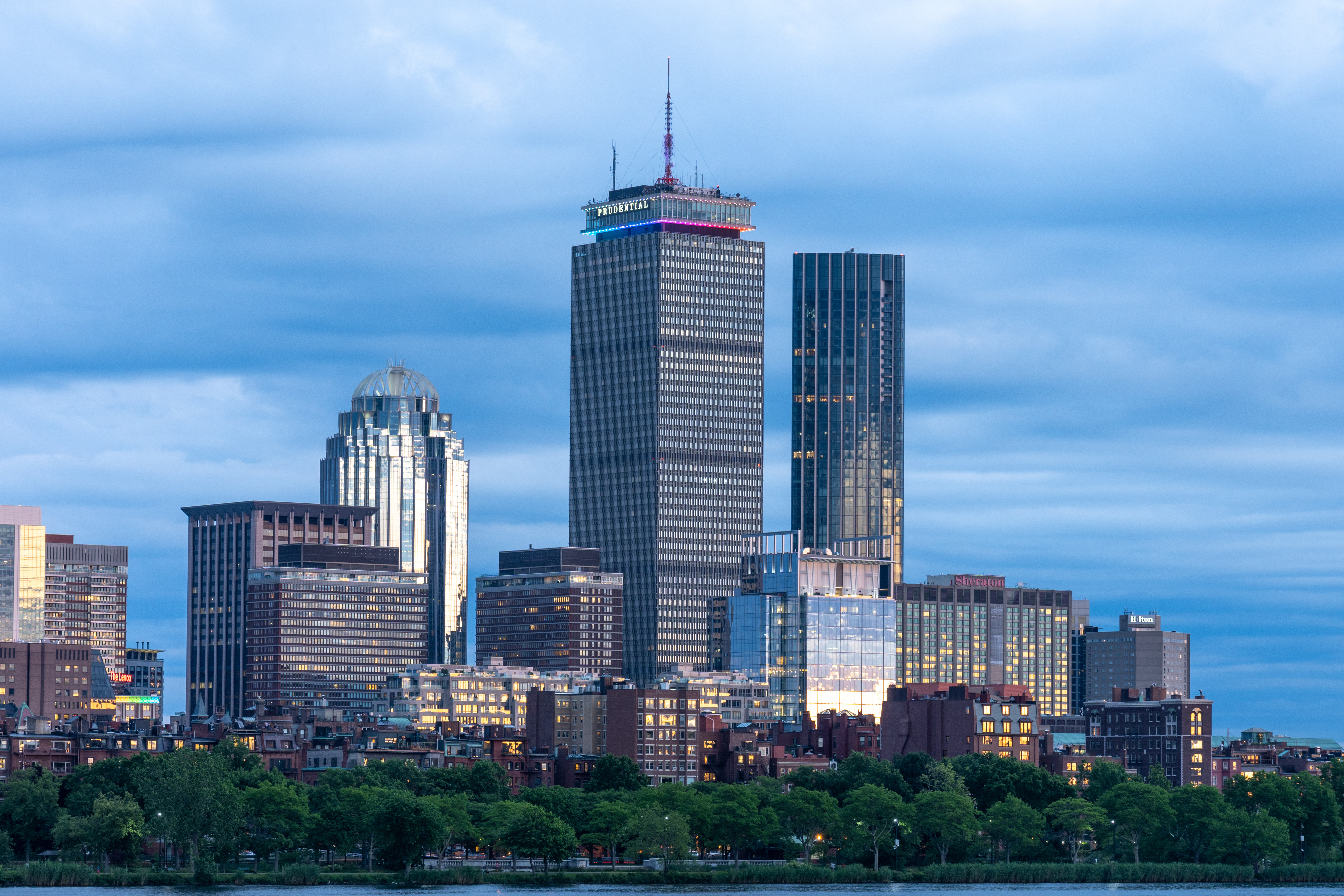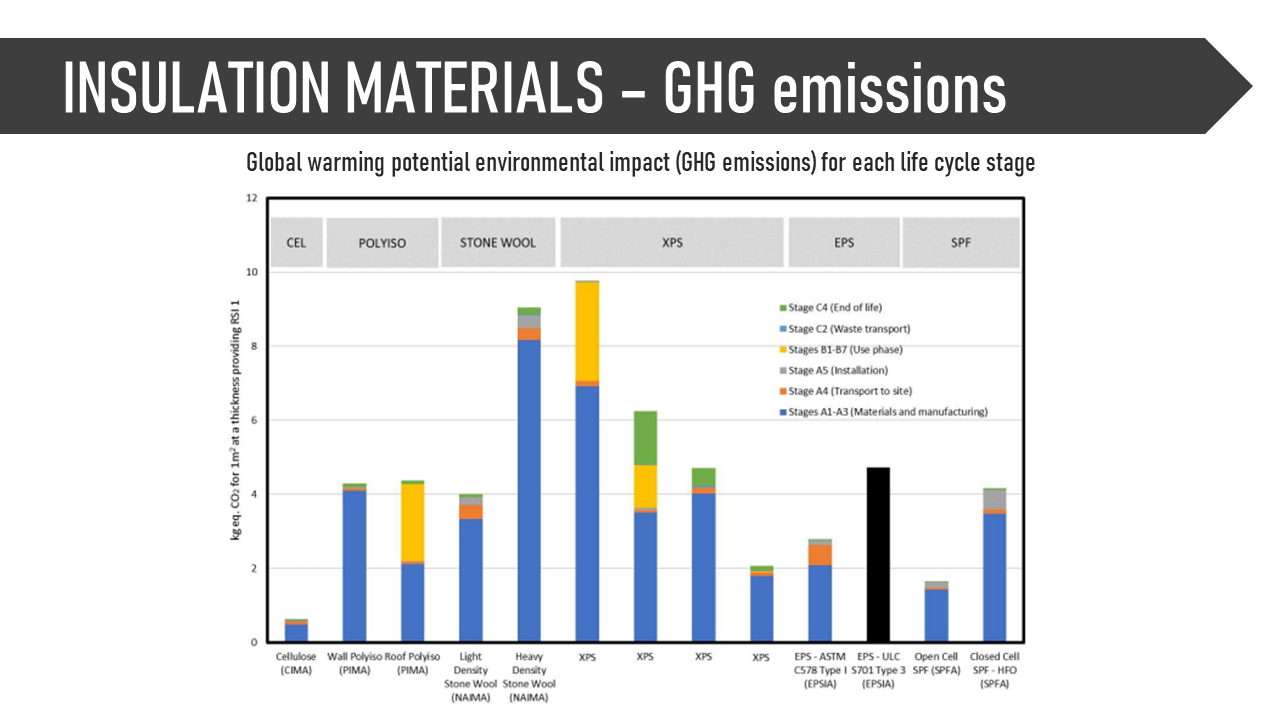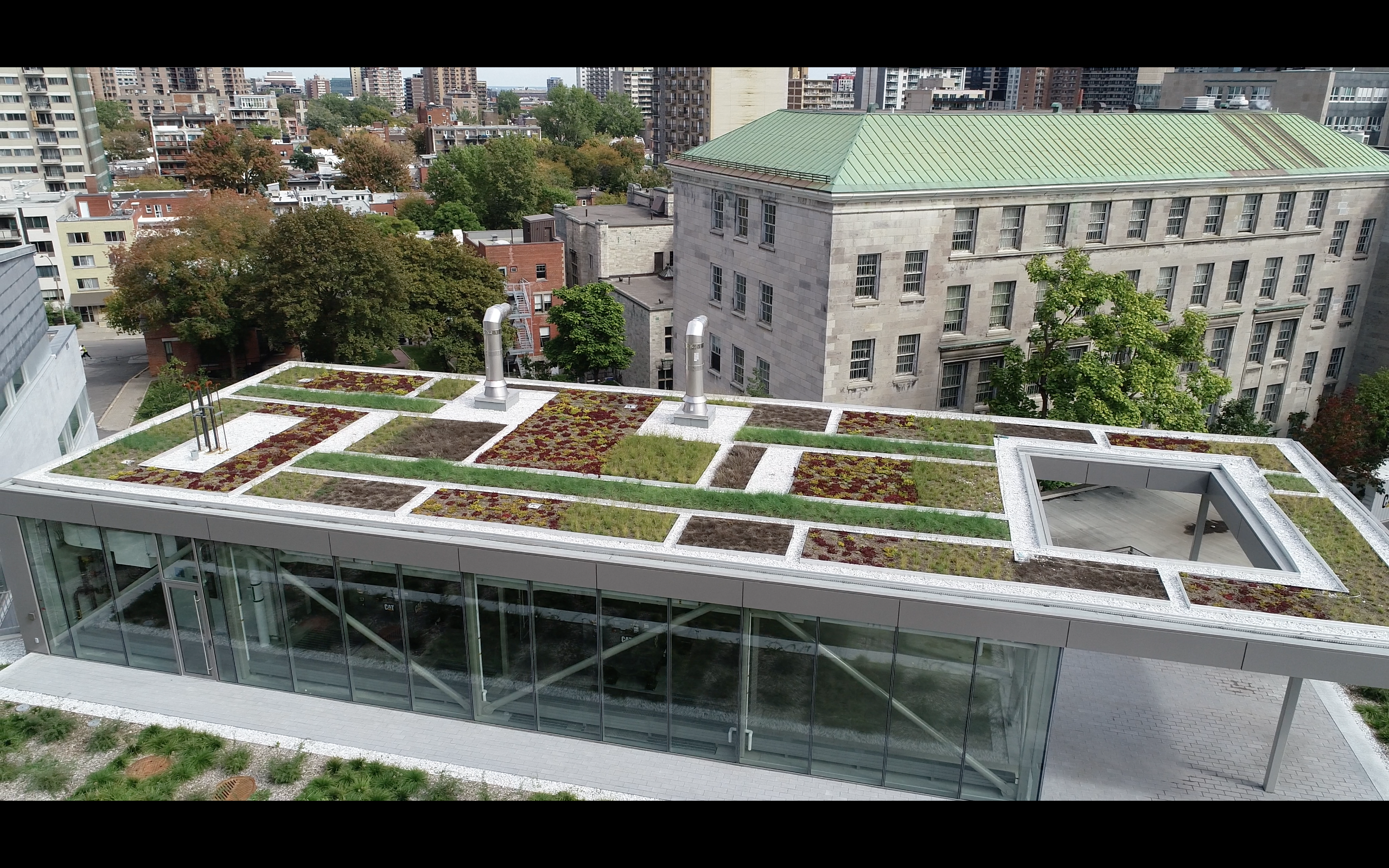The Enduring Advantage
Choosing Sustainable and Resilient Roofing Materials to Contribute to Design Goals
Thoughtfully selected commercial roofing can enhance the resilience and sustainability of the built environment. The best of these systems increases the service life of buildings, increases the overall performance of buildings, increases the resilience of buildings, and ensures the health and comfort of occupants.
Resiliency and durability are building blocks for sustainability. The roof assembly should be designed to deal with natural events, with the intent that any damage would require minimum repairs or disruption to the operations of the building. Redundancy of systems is a key component in this strategy. Additionally, building codes have to be regarded as the minimum. Designs that exceed those codes can provide increased resilience, keeping the structure ahead of performance requirements.
Roofing Contributions to Sustainable Design
Commercial roofing offers practical contributions and attributes to sustainable design. These include membrane durability, smog or pollution reduction strategies, energy efficiencies, insulation with GHG reduction, and alternate roof designs with vegetated roof systems, and stormwater management.

Photo courtesy of SOPREMA
A resilient roof is designed to deal with natural events with the intent that any damage requires minimum repairs or disruption to the operations of the building.
Durability and Resilience
Modified Bitumen systems have been used globally for over 50 years in the roofing and waterproofing industry with proven performance. With the longest lasting performance of all products, modified bitumen systems offer demonstrable durability. While other synthetic roofing technologies and systems have evolved in that time, modified bitumen systems continue to maintain a long-standing reputation for durability and longevity. Modified bitumen roofs today have evolved with significant improvements in application and technologies. Their longer service life and less waste create less environmental impact. Single-ply roofing, with a depth of 60 or 80 mls, has an expected service life of 15 to 20 years where modified bitumen roofs, at 240 mls, have an expected service life of 30 years or greater. The longer the life of the roof, the less carbon emissions created with the replacing the roof and avoiding landfill waste. A long lasting roof leads to less waste.
An additional benefit to increase the sustainability attribute is the fact that a modified bitumen roof can be overlayed upwards of two times depending on local codes. The European Waterproofing Association (EWA) published an Environmental Product Declaration (EPD) for flexible bitumen sheets. This EPD reports in detail the environmental performance for these systems. The EWA concluded that properly designed, installed, and maintained modified bitumen systems can last greater than 35 years, and, where replacement roofs can be installed right over the existing roof for a total of two times, the roof provides upwards of a 105-year service life. The product is also recoverable.
A final point to highlight with modified bitumen roofs is their proven resilience in severe weather—considering the increasing severe weather events. In 2022, the U.S. experienced 18 separate weather and climate disasters costing at least 1 billion dollars.4 That number puts 2022 into a three-way tie with 2017 and 2011 for the third-highest number of billion-dollar disasters in a calendar year, behind the 22 events in 2020 and the 20 events in 2021.5 Both SBS and APP modified bitumen membranes as well as liquid applied membranes were found to be best at resisting damage, as noted in the Federal Emergency Management Agency (FEMA) and the National Institute of Standards and Technology (NIST) guidelines.6
When it comes to the protection of a building, the roof is the first line of defense against severe weather. There are few more common weather events that are more devastating to a roofing system than hail. FM Global is one of the most prominent property insurance companies and specializes in loss prevention and testing. FM Global has designated hail zones in the United States, classifying each zone based on the size of hail. These zones are used when designing, specifying and constructing roof systems to ensure they meet the criteria to withstand impacts from the designated hail size. The geographic areas have expanded year-over-year according to FM Global. The most stringent rating is for Very Severe Hail (VSH), where hail stones greater than 2 inches may occur. The roof assemblies undergo the most stringent testing to obtain VSH approval and are a testament to the proven resilience and durability. Modified bitumen systems are the most frequently approved roofs under VSH criteria.

Photo courtesy of SOPREMA
As cities densify, air quality is negatively impacted. Roofs using photocatalytic coatings harbor granules that react with UV light to reduce air pollutants. Twenty thousand square feet of treated roofs can offset 8,000 miles of car emissions annually or equate to 120 trees.
Pollution
Twenty-five major cities are failing to meet federal standards for air quality. The American Lung Association’s “State of the Air” 2023 report finds that after decades of progress on cleaning up sources of air pollution, nearly 36 percent of Americans—119.6 million people—still live in places with failing grades for unhealthy levels of ozone or particle pollution.7 The number of people living in counties with failing grades for daily spikes in deadly particle pollution was 63.7 million, the most ever reported under the current national standard. 8
Photocatalytic coatings, the latest in technology, are entering the picture to help roofs with a demonstrable performance to provide a solution. These coatings come as granules placed on the cap sheet of a modified bitumen roof. The photocatalytic coating reacts with ultra-violet (UV) light to reduce air pollutants. A team at 3M designed the photocatalytic granules decades ago in pursuit of ways to remove algae and its associated black streaks from rooftops. The granules work through photosensitization, a process by which a photochemical alteration occurs in one molecular entity as a result of initial absorption of radiation by another molecular entity. The most powerful advanced oxidation systems are based on the generation of hydroxyl radicals. The hydroxyl radical is an extremely powerful oxidation agent. Utilizing the strong oxidation strength of hydroxyl radicals, photocatalytic oxidation can effectively disinfect, deodorize, and purify air, water, and different surface areas. It can prevent accumulation of smoke and soil, pollen, bacteria, virus and harmful gases, as well as seize the free bacteria in the air by a filtering percentage of 99.9 percent with the help of the highly oxidizing effect of the photocatalyst. Photocatalytic coatings are also self-cleaning. In essence, when sunlight hits the granules, the ultraviolet rays convert captured polluting gases to safe, water-soluble ions that wash away when it rains.
Lawrence Berkeley National Laboratory tested the technology, confirming the granules reduce nitrogen oxide levels. For every 500 square feet of roof covered in granules, the cleaning performance equates to that of 3 mature trees. A 20,000-square-foot roof offsets 8,000 miles of car emissions.
Energy Efficiency
The 2012 International Energy Conservation Code (IECC), which adopted ASHRAE Standard 90.1- 2010, increased the minimum thickness required for continuous insulation for most commercial wall assemblies in climate zones 3 through 8, or approximately 90 percent of the United States. The 2012 IECC also included specific, mandatory provisions for Air Barriers in Climate Zones 4-8. These requirements can be met through the use of approved materials, approved assemblies, or whole building air leakage testing (ASTM E779). Since 2009, the roofing industry has seen an R-10 increase in most of the states. The total minimum insulation thickness has increased from 3.5 inches (R-20) to 5.2 inches (R-30) in parts of over 40 states. The 2015 International Energy Conservation Code (IECC) is the driving force behind this movement, and currently more than 20 states have adopted the 2015 IECC, or a portion of its provisions, as their statewide energy code.
Insulation Impacts
As energy codes change, they have increased the amount of insulation and required R-value. However, insulation carries its own environmental impact. Until recently, HFC was the blowing agent of choice used for manufacturing rigid insulation and pressurized foams and adhesives. However, HFC has a high global warming potential (GWP) 1400 times that of 1kg CO2. A newer agent, HFO, carries a rating less than 1 GWP. For this reason, states have been changing regulations to outlaw products using HFC.
Those roofing insulation products produced using HFO as a blowing agent have reduced CO2 emissions by 99.8 percent. Thermal conductivity with HFO is 25 percent better, and shrinkage is minimized. Recycled content is another important advance, with some manufacturers having products that feature up to 70 percent recycled content.

Image courtesy of SOPREMA
Global warming potential environmental impact from different types of insulation. A significant amount of emissions come from manufacturing, as show in blue. Product data drawn from publicly available EPDs.
When comparing roofing insulation materials, most greenhouse gas (GHG) emissions are generated from product manufacturing and occur as embodied carbon. The emissions are generated during material extraction and manufacturing. Significant swings of environmental impact can be seen between four different manufacturers of extruded polystyrene (XPS) products. Having an EPD from a manufacturer allows for vital information about impacts incurred during material extraction and processing. Understanding specific product GHG emissions can translate, on a typical 10,000-square-foot roof, into a 25 to 30-ton difference of embodied carbon emissions between the product with the highest GHG and the product with the lowest. EPDs and material transparency provide design professionals with a powerful selection tool to minimize embodied carbon through product choice. Cellulose insulations have the lowest GWP generally, based on product EPDs, with open cell spray foam and certain XPS and EPS systems also having lower GWP.
Sealant and Adhesive Materials
Advances in sealants and adhesives also have been made. Environmentally friendly, low-VOC, and no-odor products can contribute to certifications on schools and healthcare projects while generally lowering a project’s environmental impact. A new technology, silyl-terminated poly ether, or STPE, offers a “do no harm” moisture cure product with ultra-low VOCs, and there are no isocyanates commonly found in PURs. This material is formulated for use in sealants, adhesives, weather resistant barriers (WRBs), and liquid applied waterproofing as well.
Cool Roof Performance
Cool roofing or reflective, white roofs have become common in many parts of the country and can offer energy efficiency benefits in some climate zones. Cool roofing, for better or worse, has virtually become a ‘de facto’ standard for many specifiers. A reflective roof can reduce the roof’s surface temperature by 40 to 60 degrees Fahrenheit, which in turn can reduce air-conditioning demand in certain climates and conditions. Cool roofs in ASHRAE climate zones 1-3 that are “under insulated” are an ideal fit. However, for climate zones 4-7, cool roofs can have a different return on investment (ROI), since there are typically more heating days than cooling. For these zones, data cautions that cool roofs may not be an automatic best fit, and should not become a ‘de facto’ standard. An initial study on the benefits of cool roof mandates was completed by ICF, an independent consulting firm with experience in climate change and data analysis. ICF undertook an analysis of existing data and previous studies on Urban Heat Islands (UHI), with specific focus on the measurable impacts of the roof albedo (albedo is the fraction of sunlight that is diffusely reflected by a body) of low-slope roofing. In certain arguments for the universal acceptance of cool roofs, even when energy efficiency gains were ruled out, the case was made that cool roofs had a positive impact on the UHI. ICF’s analysis of temperature data for cities with cool roof mandates found no discernable correlation between the imposition of cool roof mandates and a reduction in UHI.
To further inform the findings of this initial study, the ERA commissioned a companion literature review, working with the Department of Construction Science and Management at Clemson University. This literature review conducted a thorough investigation of published studies and models designed to understand the impact of membrane color on energy efficiency. The macro-level literature review investigated more than two thousand published articles. According to the Clemson researchers, this literature review exposed the reasons that there is no clear answer about the relationship of UHI and energy efficiency. First, the results of these studies varied because the impact of cool roofs is influenced by a range of factors such as roof type, insulation quantity and efficiency, climate, and location. The studies also varied in methods of data capture and analysis, reliance on simulation-based studies, and minimal data capture duration. Other factors potentially influencing varying outcomes included consideration of a “heat penalty” during the winter season and the interaction of different building heights. Additionally, there was no consistent comparison of the impact of the urban tree canopy, roof type, insulation thickness, hardscape, and asphalt paving surfaces. “In many instances”, according to Dr. Dhaval Gajjar, a primary researcher on the project, “more recent studies based their conclusions and recommendations on widely distributed prior studies, which now must be considered dated or incomplete information given more updated research.”9
Green Roofing Contributions
There is an increasing demand for green roofing. Demand for green, or vegetative, roofing systems in the U.S. is forecast to rise 5.1 percent per year to $207 million in 2025, with demand, measured by area, projected to reach 11.8 million square feet, according to Berkshire Hathaway’s Business Wire 2022 study.10 Additional factors cited that support this growth forecast include: the rising awareness of both the public and the private benefits of green roofs, such as reducing urban heat island effects and increasing local biodiversity while also lowering building utility costs; the expanding number of cities with green roofing mandates and/or incentive programs that promote property owners to install green roofs; the aesthetic appeal and recreational benefits of green space amenities; and the ability of green roofing systems to earn LEED credits.11 Green roofs and blue roofs, those roofs engineered for flow and water detention within a vegetated roof, have measurable benefits that include added amenity and usable space, cleaner air, roof protection, noise reduction, reduction in the heat island effect, more energy efficiency, and greater biodiversity. A green roof can also include a roof garden, solar or photovoltaic systems, and living areas like patios.

Photo courtesy of SOPREMA
Selecting a green roof brings a multitude of benefits, including noise and heat reduction, roof protection, cleaner air, biodiversity, and greater amenity and usable space.
In some markets, a design goal for vegetated roofs is to maximize nutrient removal and runoff volume reduction. By retaining and releasing water at a certain pace, blue roofs offer stormwater management. As runoff becomes an increasing concern for urbanized settings, many municipalities are giving credits to offset the costs for a blue roof.
Through either retention strategies, like cuspated drainage sheets or moisture mats, or detention methods, including drainage and storage cells, a blue roof can absorb up to 60 percent of small to medium size storm occurrence. The Virginia Stormwater Management Handbook 2013 states: “…a paradigm shift in the approach to managing runoff from land development projects… focusing primarily on reducing the volume of runoff on the site, rather than focusing on merely treating the pollution in the runoff. Runoff volume reduction accomplishes the full range of stormwater management goals more effectively and efficiently than in the past.”









